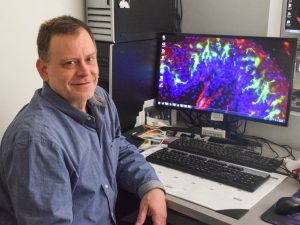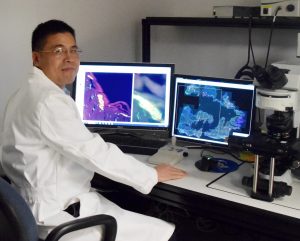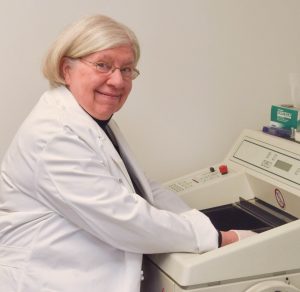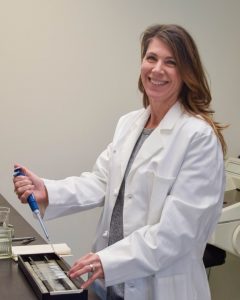
Frank L. Rice, PhD
President and Chief Scientist
Dr. Rice has over 35 years of experience in somatosensory system biology beginning with doctoral studies of cerebral cortex development under the mentorship of Dr. Hendrik Van der Loos at Johns Hopkins University School of Medicine. In the mid-1980s, Dr. Rice’s interests shifted to cutaneous innervation beginning with classic reduced-silver preparations which were state-of-the-art at the time and transitioning into multi-label immunochemical assessments during several years as a visiting professor at the Karolinska Institute in Stockholm, Sweden. His research has been characterized by extensive collaborations with investigators at over 30 academic centers and pharmaceutical companies. The research has emphasized:
- Multispecies assessments of normal adult and developing innervation. These have included such diverse species as a variety of rodents (including African naked mole-rats), marsupials, carnivores, manatees, monkeys, and humans
- Multimolecular studies of trophic factors that control the development and maintenance of cutaneous innervation. These studies have included the NGF and GDNF families of neurotrophic factors and transforming growth factors
- Multidisease studies in monkeys and humans, and related experimental paradigms in subprimate species. These studies have included postherpetic neuralgia, complex regional pain syndrome, diabetic neuropathy, chemotaxic neuropathy, scleroderma, nerve constriction injury, and inflammation
As a result of this research, Dr. Rice has emerged as one of the world’s leading authorities on skin innervation, vascular organization, and more recently, epidermal chemistry. Major research contributions include:
- The detailed organization of the cutaneous microvasculature and strategic positioning of several associated varieties of vascular sensory and autonomic innervation
- The stratified neurochemical organization among the epidermal kerotinocytes and the likely role of the keratinocytes in sensory processing and integration. These discoveries include the elucidation of endogenous analgesic mechanisms within the keratinocytes
- Detailed elucidation of pathological changes in the chemistry, structure, and distribution of cutaneous innervation, and changes in keratinocyte chemistry associated with human neuropathic pain
Dr. Rice is an adjunct professor in the department of biomedical sciences at the State University of New York at Albany. He was previously a professor in the Center for Neuropharmacology and Neuroscience at Albany Medical College for 33 years and on the faculty of the University of Lausanne, Switzerland, and the Johns Hopkins University School of Medicine. He has a BS in biology from Lebanon Valley College in Annville, PA, and a PhD in anatomy from Johns Hopkins University.






 Phillip J. Albrecht, PhD
Phillip J. Albrecht, PhD George Houk (Quanzhi Hou), MD, PhD
George Houk (Quanzhi Hou), MD, PhD Marilyn Dockum
Marilyn Dockum Elizabeth Ruggerio
Elizabeth Ruggerio